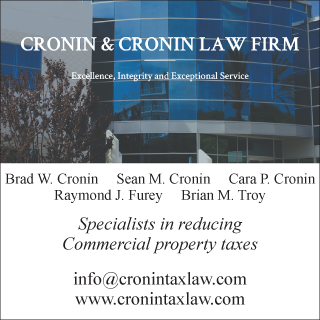News:
Long Island
Posted: July 15, 2013
The end of off balance sheet lease accounting may impact access to financing for lessees
Leasing is a major activity for many entities. It is a means for gaining access to assets, obtaining financing and reducing an entity's exposure to the risk of asset ownership. However, a proposed change in the guidance for lease accounting will profoundly change the financial scenario for lessees by ending the customary practice of treating leases as off balance sheet liabilities.
Recognizing leases on their balance sheets will almost certainly create a negative impact on their financial ratios, with the effect of restricting lessees' ability to obtain financing. But on the flip side, it will give users of financial statements a complete understanding of an entity's leasing activities.
Current accounting standards require lessees and lessors to classify their leases as either operating or capital leases based on certain criteria, with different accounting treatments applied. Despite the detailed rules that currently govern lease accounting, financial statement users have often complained that the existing guidance does not provide a clear representation of leasing activity since it often does not require the lessees to recognize assets and liabilities as a result of their leasing activities.
In order to address these concerns, the Financial Accounting Standards Board (FASB) and International Accounting Standards Board (IASB) recently released a joint revised proposal for accounting for leases. If adopted in final form, the guidance would create a new approach to lease accounting that would require most assets and liabilities arising from leases to be reflected in the financial statements of lessee entities. If enacted, the standards reduce an entity's ability to use leases as off balance sheet financing. Although most of the issues and discussions leading to the planned changes in lease accounting guidance have focused on lessees, the proposed guidance also will revise how lessor entities reflect lease arrangements in their financial statements.
The proposed guidance addresses these concerns by requiring the lessee to recognize assets and liabilities arising from a lease. Based on the proposed standards, the only leases that can be recognized as operating leases (off balance sheet) are those with a maximum term of 12 months or less.
The exposure draft requires lessees to recognize on their balance sheet the exclusive right to use the asset and the related commitment to pay for that right.
The revised exposure draft distinguishes between leases of property and leases of other than property (equipment).
For most leases of property (land and /or a building or part of a building), a lessee would account for the lease as follows:
* Recognize a right-of-use asset and lease liability on their balance sheet. The asset and corresponding liability would initially be measured at the present value of the lease payments.
* Recognize a lease cost, which would combine the unwinding of the discount on the lease liability with the amortization of the right-of-use asset, on a straight line basis.
The lessor, on the other hand, for most leases of property, would apply an approach similar to the existing operating lease accounting guidance in which the lessor would do the following:
* Continue to recognize the property.
* Recognize lease income over the lease term, typically on a straight line basis.
For most leases of assets other than property (equipment, cars, trucks), the lease would be accounted for as follows:
* Recognize a right-of-use asset and lease liability, initially measured at the present value of lease payments.
* Recognize the unwinding of the discount on the lease liability as interest separately from the amortization of the right-of-use asset, thereby recognizing more expenses in the beginning.
When measuring the assets and liabilities arising from a lease, both the lessee and lessor would exclude most variable lease payments. In addition, both would include payments to be made in optional periods only if the lessee has significant economic incentive to exercise an option to extend or to terminate the lease.
If the proposed guidance is finalized in its present format, it will significantly change the landscape associated with accounting for leases and will be applicable to all public, private and not- for- profit entities. The impact will be substantial and may affect loan covenants forecasts, the ability to obtain loans and the potential need for new accounting systems to capture the necessary data.
Ira Kantor is director, accounting services at Marcum LLP, Melville, N.Y.
Tags:
Long Island
MORE FROM Long Island
Suffolk County IDA supports expansion of A&Z Pharmaceuticals
Hauppauge, NY The Suffolk County Industrial Development Agency (IDA) has granted preliminary approval of a financial incentive package that will assist a manufacturer in expanding its business by manufacturing more prescription (Rx) pharmaceuticals in addition to its existing over-the-counter

Quick Hits
Columns and Thought Leadership

The evolving relationship of environmental consultants and the lending community - by Chuck Merritt
When Environmental Site Assessments (ESA) were first part of commercial real estate risk management, it was the lenders driving this requirement. When a borrower wanted a loan on a property, banks would utilize a list of “Approved Consultants” to order the report on both refinances and purchases.









.jpg)